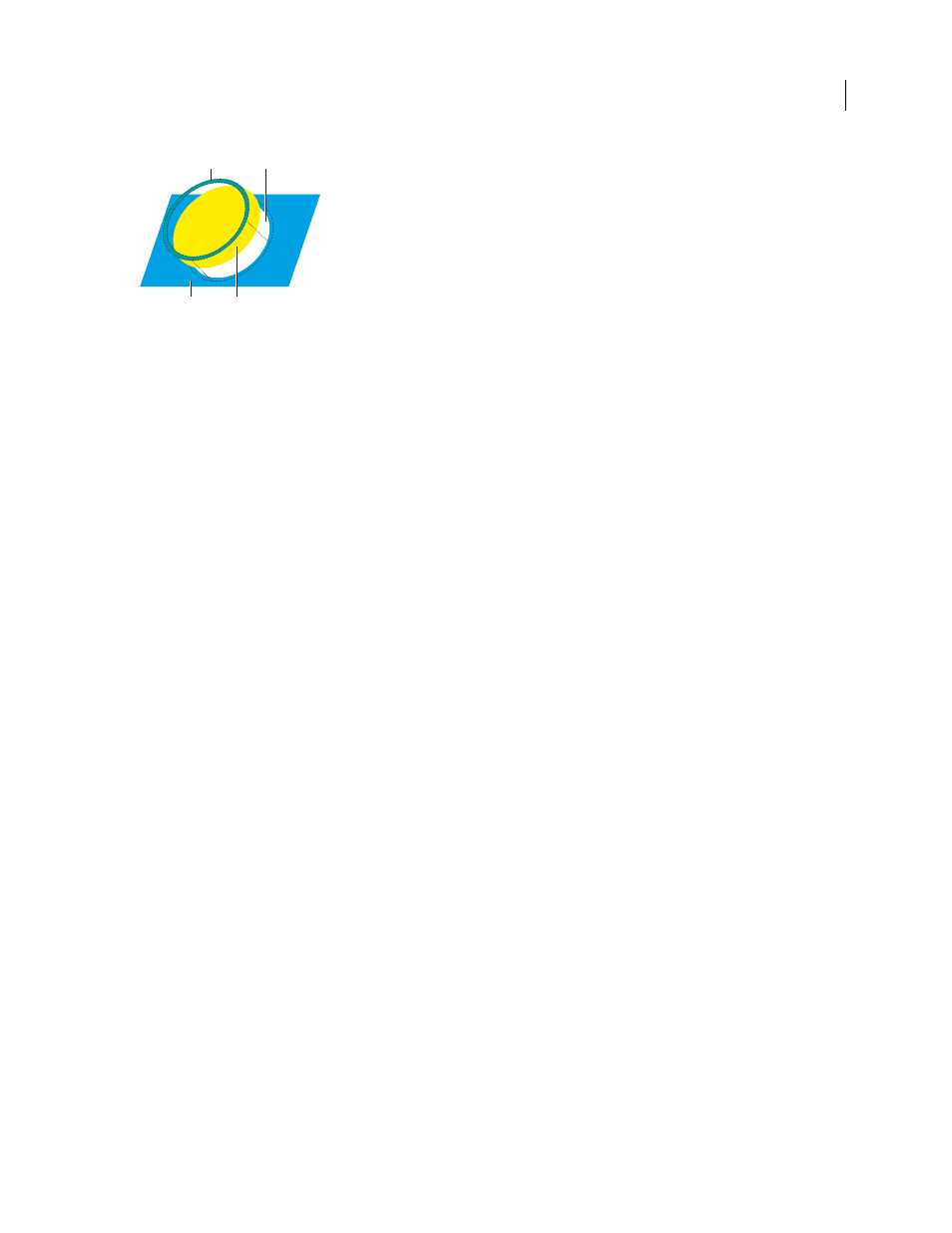Adobe Illustrator CS3 User Manual
Page 433

ILLUSTRATOR CS3
User Guide
427
What the Trap command does
A. Area of overprinting B. Area of knockout C. Background color D. Foreground color
In some cases, the top and bottom objects may have similar color densities so that one color is not obviously darker
than the other. In this case, the Trap command determines the trap based on slight differences in color; if the trap
specified by the Trap dialog box is not satisfactory, you can use the Reverse Trap option to switch the way in which
the Trap command traps the two objects.
1
If the document is in RGB mode, choose File > Document Color Mode > CMYK Color to convert it to CMYK Mode.
2
Select two or more objects.
3
Do one of the following:
•
To apply the command directly to the objects, choose Window
> Pathfinder, and choose Trap from the panel
menu.
•
To apply the command as an effect, choose Effect > Pathfinder >Trap. Select Preview if you want to preview the
effect.
4
Set trap options, and click
OK.
See also
“About effects and filters” on page 350
“Apply Pathfinder effects” on page 230
“Pathfinder panel overview” on page 229
Trap options
Thickness
Specifies a stroke width between 0.01 and 5000 points. Check with your print shop to determine what
value to use.
Height/Width
Specifies the trap on horizontal lines as a percentage of the trap on vertical lines. Specifying different
horizontal and vertical trap values lets you compensate for on-press irregularities, such as paper stretch. Contact
your print shop for help in determining this value. The default value of 100% results in the same trap width on
horizontal lines and on vertical lines. To increase the trap thickness on horizontal lines without changing the vertical
trap, set the Height/Width value to greater than 100%. To
decrease the trap thickness on horizontal lines without
changing the vertical trap, set the Height/Width value to less than 100%.
A
B
C D
